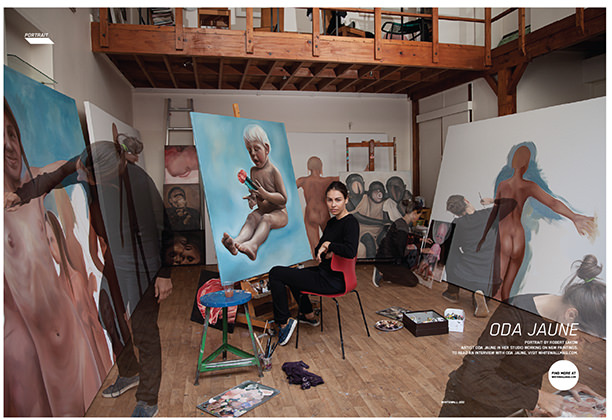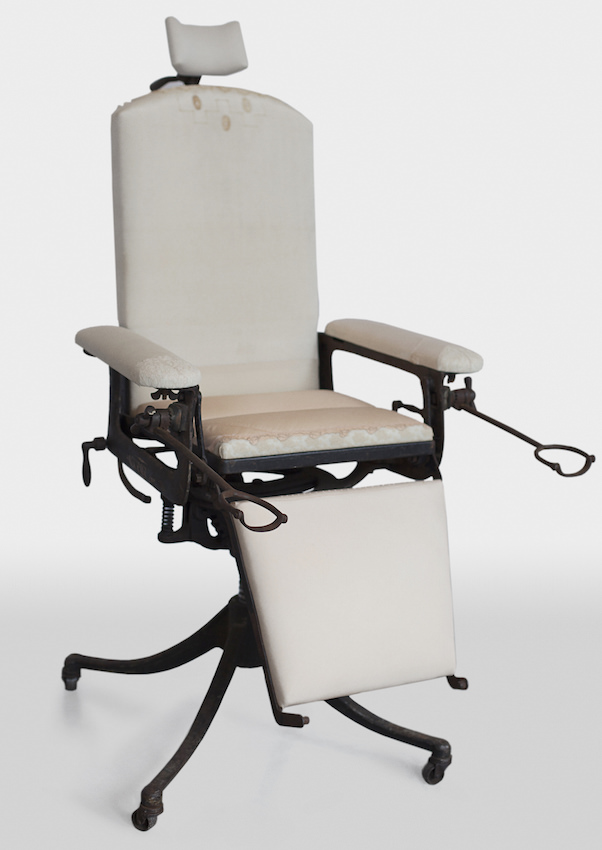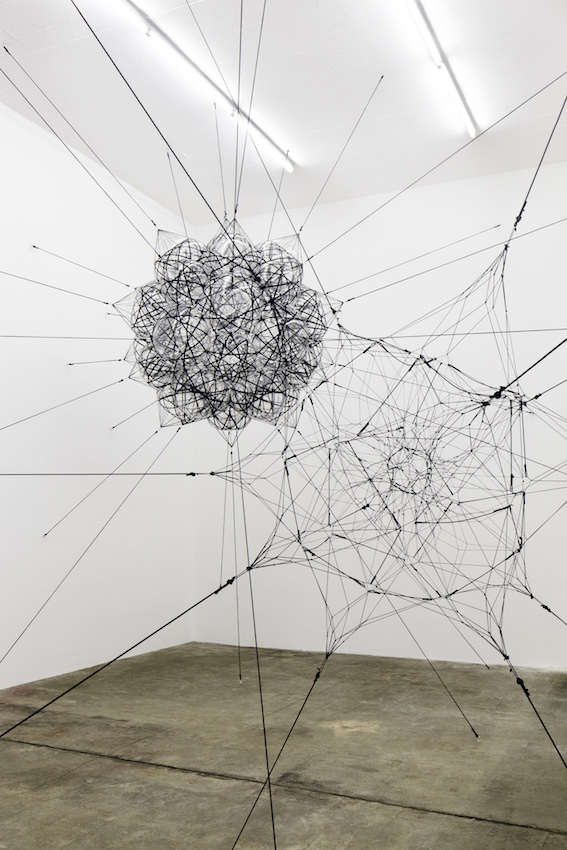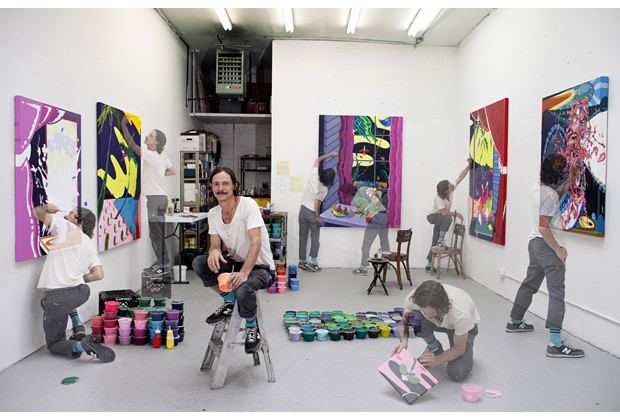The spring 2013 Art Issue of Whitewall featured a photographic collage by Robert Lakow taken at artist Oda Jaune‘s studio in Paris. The photo is part of an ongoing series that brings Whitewall readers from print to web. It’s also a continuation of the series on Whitewallmag.com, “Creative Space,” where we showcase the studio, home, office, or wherever where leading creative figures do what they do.
We spoke with Jaune earlier in the spring to discuss her studio routine, painting process and how she always paints from her imagination, never models.
WHITEWALL: What is a typical day at your studio like?
ODA JAUNE: I start very early, half-past eight. Working in daylight is very important for me because the colors change so much. So I work very fast, very early, and finish around six.
WW: Do you work on each piece at the same time? Are these works part of a new series that you’re working on?
OJ: Yes, I’m preparing an exhibition that will open at the end of the year at Michael Fuchs Galerie in Berlin (running through November 1 – December 21). It often takes half a year before the paintings are ready because I work on many at the same time. Normally I don’t work in series, but they do belong together. I have even given birth to them at the same time. They are like family I suppose [laughs]!
WW: How do you begin with a painting?
OJ: I start directly on the canvas. I don’t do any work beforehand, and I don’t plan or make sketches. I usually don’t know what’s going to happen. That way, it’s a surprise for me too.
WW: Sometimes, in your paintings, a figure becomes disfigured or a torso turns into something else. How does that come about?
OJ: I think it happens unconsciously. I have, of course, something that moves me when I start painting, but it gets covered with layers. Sometimes what I started with disappears completely and only I know it’s there. Maybe one day somebody will be curious to see what’s underneath.
WW: The figures in your paintings, are they all from memory? Or do you work from photographs or models?
OJ: I work from my imagination. For some paintings, I use photos that I find, but I never work with models because when they are in front of me it gets too personal. I might feel the character of that person because they are real, not just image, and so it takes away my freedom to change the work afterwards. I can paint from the Internet or newspapers, but never people that I know, that have a history or voices I know.
WW: Could you talk about the painting of the child and the cactus?
OJ: I started with the idea of catching the moment where you hurt yourself and you haven’t realized it yet, that short instant before the pain arrives. The child is touching the cactus and isn’t crying yet; there is no pain in their face. It’s just beautiful in that moment because, you know, the cactus is what the kid wanted. This is one of my first layers [laughs] and I have no idea what is going to happen, if it will stay like this.
WW: How do you know when a painting is finished?
OJ: It kinds of tells me [laughs]. It’s like I can’t do anything else, I’m unable to add or to take anything out.
WW: Do you think about what you want a viewer to feel when they look at the work?
OJ: Yes, in general, I think about people. What I want to express and what I want to show, are in the paintings. You see, I don’t really have a landscape or a still life most of the time, but I have human beings. It’s for them.
WW: Made for them to see and think
OJ: Yes. My hope is people will be touched by it and something will happen inside them, you know? Maybe not, but that’s what I hope.










